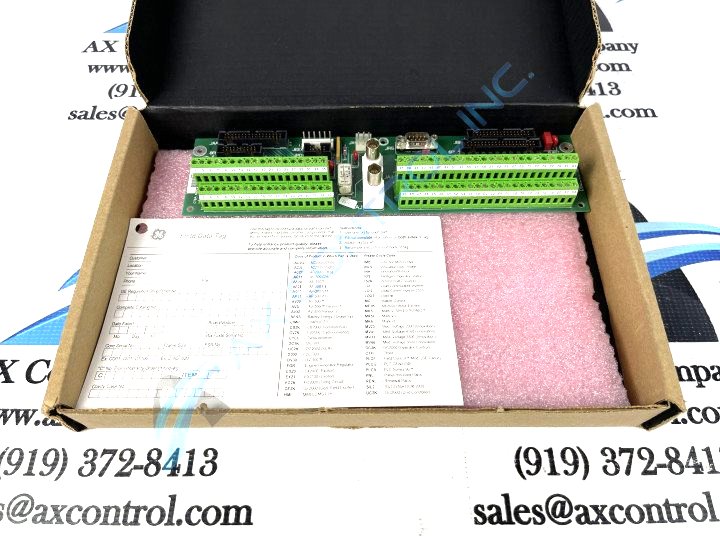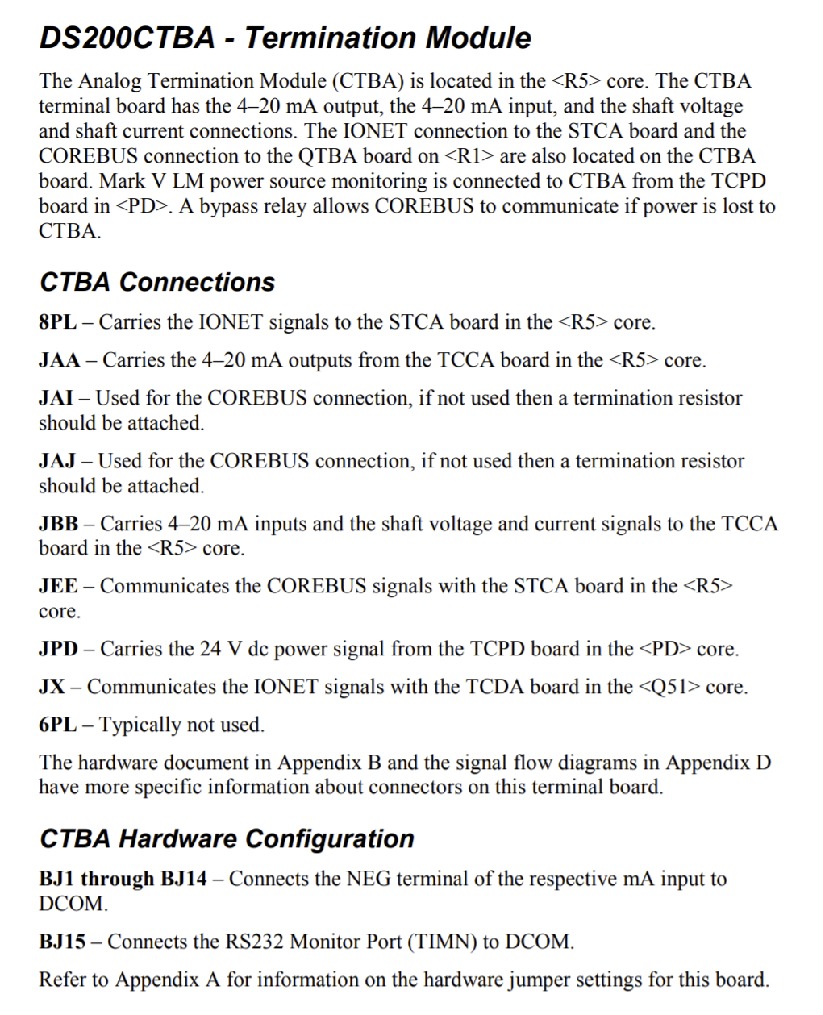About the DS200CTBAG1ACC
The DS200CTBAG1ACC printed circuit board functions as a GE Mark V Common Data Processor Termination board, although its official functional description is simply that of a Analog Termination Module. While this part has now been placed into legacy status by General Electric and is no longer supported by the original manufacturer, our company works hard to maintain on-hand stock so we can better provide our customers with replacements as needed. The DS200CTBAG1ACC is a long and narrow PCB that is used as a termination board for the Mark V’s common data processor. The card is typically placed in <R5>, and contains both IONET and COREBUS communication interfaces for the system, as well as I/O terminations. Analog signals from this board connect to and are conditioned by the DS200TCCA board.
Hardware Tips and Specifications
Now that some of the intended functionality and role within the Mark V Series for this DS200CTBAG1ACC Analog Termination Module has been discussed, it is possible to contextualize some of its various specific hardware choices. For starters, this DS200CTBAG1ACC Analog Termination Module actually exists as an edited version of an already-existing Mark V Series circuit board product; modifying the original DS200CTBAG1 Analog Termination Module through its inclusion of two functional product revisions and a singular artwork-focused product revision. The DS200CTBAG1ACC accepts 4-20 mA input and output signals as well as shaft voltage and shaft current signals, and has a bypass relay on its surface. This bypass relayer allows continued COREBUS communications even when power is lost to the CTBA board. The DS200CTBAG1ACC' internal assembly additionally includes two terminal strips, vertical pin connectors, a relay, resistor network arrays, plug connectors, and jumper switches. The DS200CTBAG1ACC Analog Termination Module is marked with the GE logo and also carries its identifying board number, as many similar Mark V Series circuit boards do. The board has been drilled in each corner to allow for mounting options; some of these drill holes are ringed with conductive material to protect against potentially lethal surface voltages.














